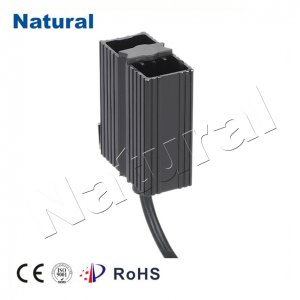PTC Heater Elements: A Revolution in Heating Technology

In the realm of heating technology, PTC (Positive Temperature Coefficient) heater elements have emerged as a revolutionary solution that has transformed the way we heat our surroundings. These remarkable devices have garnered significant attention due to their unique properties and versatility in various applications. In this article, we will explore the intriguing world of PTC heater elements and delve into the reasons behind their widespread adoption. What is a PTC Heater Element? PTC heater elements are electronic components designed to generate heat when an electrical current passes through them. The term “Positive Temperature Coefficient” refers to their characteristic of exhibiting an increase in electrical resistance as their temperature rises. This self-regulating feature makes PTC heater elements stand out in the world of heating technology. How Do PTC Heater Elements Work? The operation of PTC heater elements relies on a simple yet ingenious principle. As current flows through the element, it heats up due to its inherent resistance. Unlike traditional heating elements that maintain a constant resistance, PTC elements experience an abrupt increase in resistance as they reach a certain temperature, often referred to as the Curie temperature. This increase in resistance acts as a built-in safety mechanism, preventing the element from overheating and causing potential hazards. Versatility in Applications PTC heater elements have found their way into a multitude of applications, thanks to their adaptability and reliability. Here are some of the key areas where PTC heater elements have made a significant impact: Automotive Industry: PTC heater elements are widely used in automotive systems, such as cabin heaters and defrosters. Their rapid heating capabilities ensure that drivers and passengers stay warm and comfortable even in the coldest of climates. Consumer Electronics: Many household appliances, like hair dryers and coffee makers, incorporate PTC heater elements. Their self-regulating nature contributes to energy efficiency and safety. Industrial Processes: PTC heater elements are employed in various industrial processes, including plastic welding, soldering, and adhesive curing. Their precise and controlled heating makes them indispensable in manufacturing. Medical Devices: PTC heater elements are used in medical equipment, such as nebulizers and incubators, where maintaining a stable temperature is crucial for patient well-being. Green Technologies: PTC heater elements are also making their mark in the realm of renewable energy, where they are utilized in solar water heaters and heat pumps. Advantages of PTC Heater Elements The widespread adoption of PTC heater elements can be attributed to several distinct advantages they offer: Safety: PTC elements automatically regulate their temperature, reducing the risk of overheating and potential fires. This safety feature is particularly valuable in applications where user safety is paramount. Energy Efficiency: These elements consume power only when needed, resulting in energy savings and reduced operating costs. Durability: PTC heater elements are known for their long service life, making them a cost-effective choice in the long run. Rapid Heating: PTC elements heat up quickly, providing almost instant warmth in various applications. Compact Design: Their compact size and versatility allow for easy integration into a wide range of products. Conclusion In the realm of heating technology, PTC heater elements have emerged as a true game-changer. Their self-regulating properties, safety features, and versatility have made them indispensable in numerous applications, from automotive systems to consumer electronics. As technology continues to advance, PTC heater elements are poised to play an even more significant role in enhancing energy efficiency and safety across various industries. It is clear that these remarkable devices are here to stay, shaping the future of heating technology.